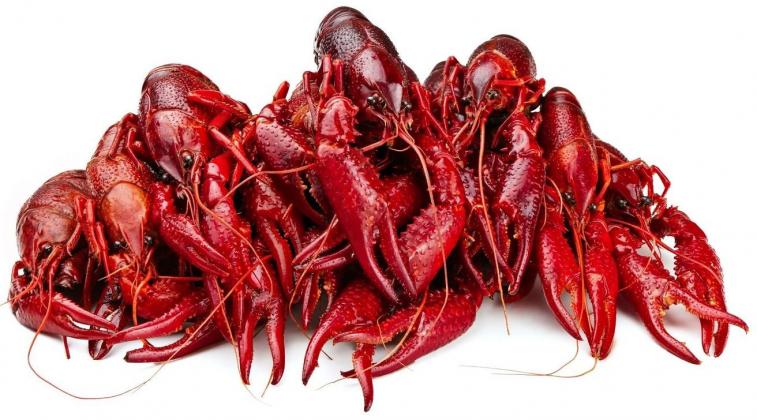
Jim Bradshaw
Get the fixin’s ready, it’s just about time for farmers to begin flooding their ponds, and it won’t be long before they start pulling crawfish from them.
Pulling them from farm ponds is actually a relatively new idea, and I’m not sure whether the industry’s success comes from the fact that the crawfish has become the symbol of practically all things Cajun, or whether the crawfish became the Cajun symbol because of the success of the farms.
The critters have been associated with south Louisiana for years, but there is no truth to the legend that they came to Louisiana with the first Acadians
You’ve probably heard the tale: After the Acadians, who had eaten lobsters in their old homeland, were exiled from Nova Scotia in the 1700s, the lobsters missed them so much that they set off to find them. The trek was so long and treacherous that the lobsters began to shrink in size. By the time they found the Cajuns in Louisiana, they had shrunk so much that they hardly looked like lobsters anymore.
It’s true that crawfish resemble little lobsters, but Native Americans were eating them in Louisiana long before the Acadians, or any other European, got to south Louisiana
Commercial sale of Louisiana crawfish began only in the late 1800s, when there were no pond-raised crawfish (at least not deliberately so), and practically the whole crop came from the Atchafalaya Basin.
The first record of a commercial crawfish harvest in the entire United States was in 1880, when 23,400 pounds with a value of $2,140 were taken from the Basin. In 1908, a U.S. Census report listed Louisiana’s crawfish production at 88,000 pounds, with a value of $3,600, That’s not even a half-penny per pound, and prices didn’t get much higher for a good while.
In the years following the Great Depression, crawfish on the hoof were up to four cents a pound, according to a study by the LSU AgCenter, but also about that time better transportation and the development of cold storage began to expand the market.
Most of the catch had been consumed locally in smaller communities near the Basin, but quick delivery opened markets in Baton Rouge, New Orleans, and other cities — although there still weren’t many places outside of south Louisiana interested, or even aware, of the little critters that would one day make us famous.
Biologist Percy Viosca was one of the first to push the idea that crawfish could be grown in ponds. He wrote about it in the 1930s, but it was 1950, before the legislature gave the Wildlife and Fisheries Commission a little money to study the idea.
As the idea spread, farmers and processors began to realize that crawfish farming was a good way to have a supply practically all year long, which, in turn, made it easier to sell them to restaurants that wanted a regular supply. By the middle 1960s south Louisiana sported some 10,000 acres of managed ponds. They produced enough crawfish for a fledgling picking and packing industry to begin, and that led to more aggressive marketing both inside and outside the state.
More restaurants began featuring them in their menus, dishes such as crawfish étouffée became known worldwide, and all of that reinforced the renaissance of a dying Cajun culture that began to gather steam in the 1970s.
In the 1980s and 1990s, according to Breaux Bridge native Sam Irwin, who’s written a book chronicling the crawfish industry (Louisiana Crawfish: A Succulent History of the Cajun Crustacean: The History Press, 2014), “Everything about Cajuns was considered cool. People were drawn to that Cajun vibe, or joie de vivre, and what’s more Cajun then crawfish?”
The answer nowadays: Nothing. Thus a symbol and an industry were born.
According to the Louisiana Crawfish Promotion and Research Board, crawfish farming has developed into the largest freshwater crustacean aquaculture industry in the United States. More than 1,600 Louisiana farmers produce more than 90 percent of the domestic crop from more than 100,000 acres of ponds. The total economic impact on the Louisiana economy is more than $300 million annually, and more than 7,000 people depend directly or indirectly on the crawfish industry.
Not bad for a critter once denigrated as a lowly “mudbug” good for nothing but “poor man’s food.”
A collection of Jim Bradshaw’s columns, Cajuns and Other Characters, is now available from Pelican Publishing. You can contact him at jimbradshaw4321@gmail.com or P.O. Box 1121, Washington LA 70589.
